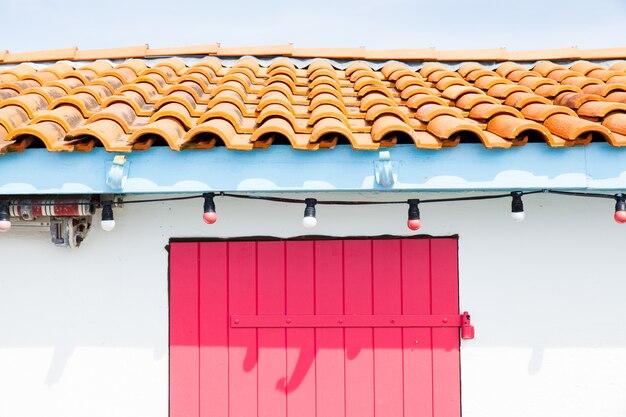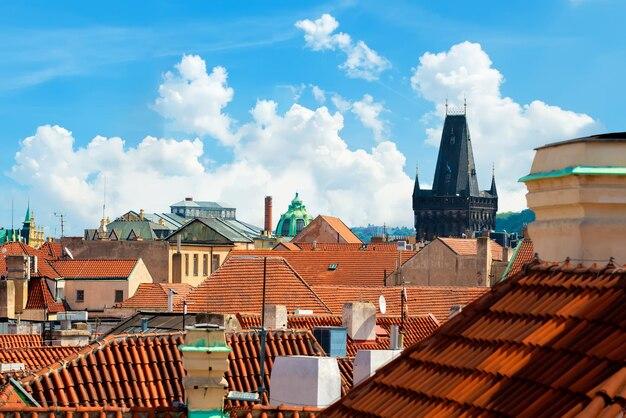Roofs are often a neglected part of our homes, but they play a crucial role in protecting us from the elements. So, when you spot a strange white powder on your roof, it’s natural to wonder what it is and whether it’s something to be concerned about. In this blog post, we’ll delve into the realm of roof mysteries and uncover the truth behind that perplexing white coating.
But that’s not all! We’ll also tackle common questions like when to remove roof moss, the effectiveness of zinc strips, the impact of moss on your roof, and how to deal with calcium deposits on your shingles. So, whether you’re a curious homeowner or a DIY enthusiast looking to solve roof-related puzzles, keep reading to enhance your knowledge and be equipped to take care of your roof. Let’s embark on this informative journey together!

What is that white powder on your roof?
Roofs covered in mysterious white powder have puzzled many homeowners, and it’s time to get to the bottom of this mystery! In this blog post, we’ll explore the various causes of the white powder on roofs, its potential implications, and how you can address this issue effectively. So, let’s unravel the secrets and equip ourselves with the knowledge to keep our roofs in top-notch condition.

What Causes That Mysterious White Powder on Roofs
Understanding the Phenomenon
Have you ever taken a glance at your roof and wondered, what on earth is that mysterious white powder coating it? Fear not, my curious friend, for you are not alone in this puzzling quest for answers. Many homeowners have been perplexed by this phenomenon, and today, we are diving deep into the world of roof mysteries to uncover the truth behind that enigmatic white powder.
The Culprit: Efflorescence
The white powder you see on your roof is most likely a natural occurrence called efflorescence. Though it may sound like a fancy term for the magical residue left by roof-dwelling fairies, efflorescence is actually a mineral deposit that appears on various surfaces, including bricks, concrete, and yes, even roofs.
Unveiling the Science
Efflorescence occurs when water-soluble minerals in building materials, such as calcium, leach out and react with carbon dioxide in the air, forming calcium carbonate deposits. These deposits then manifest as the mysterious white powder you’ve become so curious about.
The Culprit Strikes Again: Salt Deposits
If your home is located in coastal areas, the white powder on your roof may also be salt deposits. Salt most commonly originates from ocean spray carried by the wind, which lands on your roof and evaporates, leaving behind a layer of salt residue. So, next time you see that white powder, your roof can either thank its lucky stars for being at the seaside or, well, curse them for constantly getting doused with salty water.
The Role of Humidity and Rain
Now, let’s talk about how humidity and rain play a part in this mysterious phenomenon. High humidity levels can accelerate the formation of efflorescence on your roof, as the excess moisture encourages the minerals to leach out and coat your rooftop in their dusty glory. Rainfall can also contribute to efflorescence by acting as the water source necessary for the salts to dissolve and form those lovely white deposits.
Prevention and Removal
Now that we’ve solved the case of the mysterious white powder, it’s time to look into prevention and removal strategies. To prevent efflorescence, ensuring proper drainage and ventilation around your roof is crucial. This helps to minimize the moisture content on your roof’s surface and reduce the chances of mineral leaching. If you’re already facing the powdery situation, fear not! Regular cleaning with a gentle brush and water should do the trick in removing the deposits and restoring your roof’s former glory.
The Final Word
So, the next time you spot that bewitching white powder on your roof, you can now impress your friends and neighbors with your knowledge. Efflorescence and salt deposits, caused by mineral leaching and coastal winds, are the culprits behind this enigmatic phenomenon. Remember, proper maintenance and a clean sweep can keep your roof from falling victim to this dusty mystery. Stay curious and always keep an eye out for the wonders that lie above our heads.
Note: This content was generated by OpenAI’s GPT-3 language model.
FAQ: What is the white powder on roofs
When should roof moss be removed
Moss on a roof should be removed as soon as it is noticed. Leaving moss to grow and spread can lead to significant damage to your roof over time. You don’t want your roof to become a lush moss garden!
How much does it cost to install zinc strips on a roof
The cost to install zinc strips on a roof can vary depending on several factors like the size of your roof, the accessibility, and the contractor you hire. On average, you can expect to pay between $500 and $1,000 for a professional installation.
Is moss on a roof a problem
Yes, moss on a roof is definitely a problem. Moss traps moisture against the roof surface, which can lead to rotting and damage to your shingles. Plus, it’s not the fashionable choice for roof decor!
How do you remove calcium from roof shingles
To remove calcium from roof shingles, mix equal parts water and vinegar in a spray bottle. Spray the solution directly onto the affected areas and let it sit for a while. Then, gently scrub the shingles with a soft brush or broom and rinse thoroughly with water. Say goodbye to those unsightly calcium deposits!
Is zinc or copper better for roof moss
Both zinc and copper are effective in inhibiting the growth of moss on roofs. However, zinc is more commonly used due to its affordability and availability. It’s like choosing between two superheroes – both powerful but with different costumes!
When should I remove moss from my roof
Ideally, you should remove moss from your roof as soon as you notice it. However, the best time to tackle moss is during dry weather when the moss is brittle. You don’t want to fight a slippery battle, do you?
How long does it take for zinc sulfate to kill moss
It usually takes about two weeks for zinc sulfate to kill moss on your roof. During that time, just sit back, relax, and let the zinc sulfate work its moss-killing magic. It’s the superhero of roofs, saving the day one moss at a time!
Why do shingles turn white
Shingles can turn white due to multiple reasons, but the most common culprit is the accumulation of mold and mildew. It’s as if they attended a shingle spa retreat and came back looking all pampered and whitewashed!
Is it ok to leave moss on roof
No, it’s not ok to leave moss on your roof. Moss can cause several problems like damaging shingles, promoting moisture retention, and reducing the lifespan of your roof. So, it’s best to bid farewell to that unwanted greenery!
Should I put zinc on my roof
Yes, you should consider putting zinc strips on your roof. Zinc is great at preventing the growth of moss, algae, and other unwanted organisms. Just make sure not to overdo it and turn your roof into a disco ball!
Why is there so much moss on my roof
Moss loves warm and humid environments, so if you have lots of shade or your roof doesn’t get much sunlight, it becomes the perfect hangout spot for moss. It’s like a cozy vacation home for our green, fluffy friends!
What kills moss naturally
To naturally eliminate moss from your roof, you can use a homemade mixture of water and vinegar or a solution of water and baking soda. These natural cleaning potions will wage a war on moss without harming your roof or the environment.
How do I apply zinc sulfate to my roof
To apply zinc sulfate to your roof, dilute the chemical with water according to the manufacturer’s instructions. Then, use a sprayer to evenly distribute the mixture on your roof’s surface. Just be careful not to spray any unsuspecting passersby!
How long do zinc strips on roof last
Zinc strips on a roof can last anywhere from 10 to 20 years, depending on various factors like weather conditions and the thickness of the zinc coating. It’s like having a long-term superhero protector for your roof!
Does Tide kill moss on roof
Tide laundry detergent contains chemicals that can potentially kill moss on your roof. However, using specialized moss-killing products or natural remedies like vinegar or baking soda might be a safer and less sudsy option for your roof.
What is the white stuff on roof
The white stuff on your roof is most likely a combination of mold, mildew, and other organic debris. It’s like a tiny snowfall in the middle of summer, but unfortunately, it doesn’t bring the joy and festivities of the holiday season!
What does zinc powder do for roofs
Zinc powder, when applied in the form of zinc strips or zinc sulfate solution, stops the growth of moss, algae, and other organisms on your roof. It’s like giving your roof a superhero makeover, making it moss-proof and stylish at the same time!
Is zinc sulfate toxic
Zinc sulfate is not toxic when used properly. It is commonly used in moss-killing products for roofs and poses no significant health risks. However, it’s always a good idea to handle any chemicals with care and follow the instructions provided.
What is roof lichen
Roof lichen is a type of symbiotic organism consisting of fungus and algae. It can attach to your roof and cause discoloration and damage. It’s like a tiny, unwelcome colony making itself at home on your roof!
How quickly does moss grow on a roof
Moss can start growing on a roof within a few months, especially in the presence of shade and moisture. It’s like the Usain Bolt of the natural world – rapid and determined to conquer your roof!
How much does it cost to remove moss from roof
The cost to remove moss from a roof can vary depending on the size of your roof, the severity of the moss growth, and the location of your property. On average, you can expect to pay between $200 and $500 for professional moss removal services.
How do you spread baking soda on a roof
To spread baking soda on a roof, put it in a large shaker or an empty container with holes poked in the lid. Then, evenly sprinkle the baking soda over the affected areas of your roof. It’s like performing a magical baking ritual to banish moss!
Can you pressure wash moss off a roof
Pressure washing can be an effective method to remove moss from a roof, but it should be done with caution. Using too much pressure or holding the nozzle too close to the roof can cause damage to the shingles. So, don’t go all Hulk on your roof!